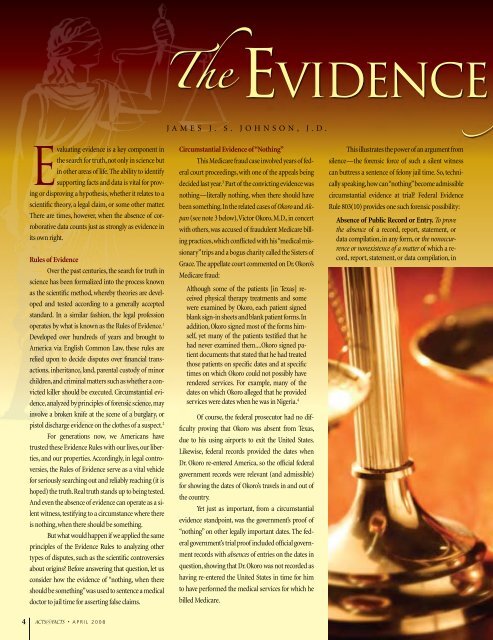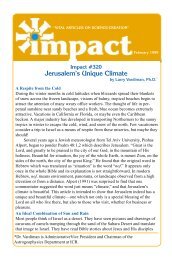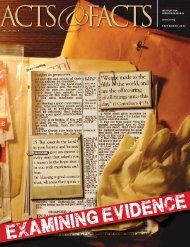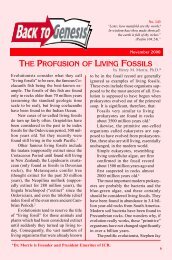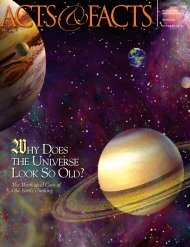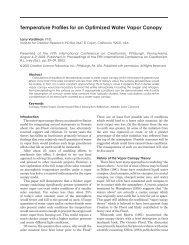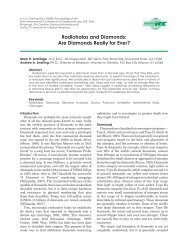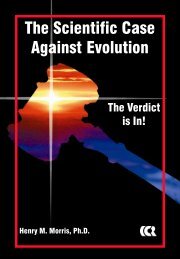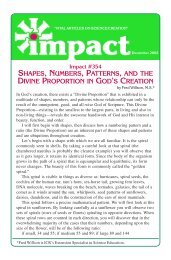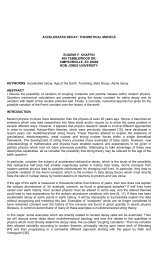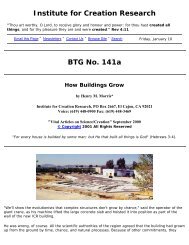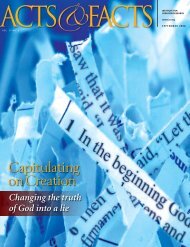Download April 2008 PDF - Institute for Creation Research
Download April 2008 PDF - Institute for Creation Research
Download April 2008 PDF - Institute for Creation Research
You also want an ePaper? Increase the reach of your titles
YUMPU automatically turns print PDFs into web optimized ePapers that Google loves.
Evaluating evidence is a key component in<br />
the search <strong>for</strong> truth, not only in science but<br />
in other areas of life. The ability to identify<br />
supporting facts and data is vital <strong>for</strong> proving<br />
or disproving a hypothesis, whether it relates to a<br />
scientific theory, a legal claim, or some other matter.<br />
There are times, however, when the absence of corroborative<br />
data counts just as strongly as evidence in<br />
its own right.<br />
Rules of Evidence<br />
Over the past centuries, the search <strong>for</strong> truth in<br />
science has been <strong>for</strong>malized into the process known<br />
as the scientific method, whereby theories are developed<br />
and tested according to a generally accepted<br />
standard. In a similar fashion, the legal profession<br />
operates by what is known as the Rules of Evidence. 1<br />
Developed over hundreds of years and brought to<br />
America via English Common Law, these rules are<br />
relied upon to decide disputes over financial transactions,<br />
inheritance, land, parental custody of minor<br />
children, and criminal matters such as whether a convicted<br />
killer should be executed. Circumstantial evidence,<br />
analyzed by principles of <strong>for</strong>ensic science, may<br />
involve a broken knife at the scene of a burglary, or<br />
pistol discharge evidence on the clothes of a suspect. 2<br />
For generations now, we Americans have<br />
trusted these Evidence Rules with our lives, our liberties,<br />
and our properties. Accordingly, in legal controversies,<br />
the Rules of Evidence serve as a vital vehicle<br />
<strong>for</strong> seriously searching out and reliably reaching (it is<br />
hoped) the truth. Real truth stands up to being tested.<br />
And even the absence of evidence can operate as a silent<br />
witness, testifying to a circumstance where there<br />
is nothing, when there should be something.<br />
But what would happen if we applied the same<br />
principles of the Evidence Rules to analyzing other<br />
types of disputes, such as the scientific controversies<br />
about origins? Be<strong>for</strong>e answering that question, let us<br />
consider how the evidence of “nothing, when there<br />
should be something” was used to sentence a medical<br />
doctor to jail time <strong>for</strong> asserting false claims.<br />
4 ACTS&FACTS • APRIL <strong>2008</strong><br />
The Ev i dE n c E<br />
JAMES J. S. JOHNSON, J.D.<br />
Circumstantial Evidence of “Nothing”<br />
This Medicare fraud case involved years of federal<br />
court proceedings, with one of the appeals being<br />
decided last year. 3 Part of the convicting evidence was<br />
nothing—literally nothing, when there should have<br />
been something. In the related cases of Okoro and Akpan<br />
(see note 3 below), Victor Okoro, M.D., in concert<br />
with others, was accused of fraudulent Medicare billing<br />
practices, which conflicted with his “medical missionary”<br />
trips and a bogus charity called the Sisters of<br />
Grace. The appellate court commented on Dr. Okoro’s<br />
Medicare fraud:<br />
Although some of the patients [in Texas] received<br />
physical therapy treatments and some<br />
were examined by Okoro, each patient signed<br />
blank sign-in sheets and blank patient <strong>for</strong>ms. In<br />
addition, Okoro signed most of the <strong>for</strong>ms himself,<br />
yet many of the patients testified that he<br />
had never examined them....Okoro signed patient<br />
documents that stated that he had treated<br />
those patients on specific dates and at specific<br />
times on which Okoro could not possibly have<br />
rendered services. For example, many of the<br />
dates on which Okoro alleged that he provided<br />
services were dates when he was in Nigeria. 4<br />
Of course, the federal prosecutor had no difficulty<br />
proving that Okoro was absent from Texas,<br />
due to his using airports to exit the United States.<br />
Likewise, federal records provided the dates when<br />
Dr. Okoro re-entered America, so the official federal<br />
government records were relevant (and admissible)<br />
<strong>for</strong> showing the dates of Okoro’s travels in and out of<br />
the country.<br />
Yet just as important, from a circumstantial<br />
evidence standpoint, was the government’s proof of<br />
“nothing” on other legally important dates. The federal<br />
government’s trial proof included official government<br />
records with absences of entries on the dates in<br />
question, showing that Dr. Okoro was not recorded as<br />
having re-entered the United States in time <strong>for</strong> him<br />
to have per<strong>for</strong>med the medical services <strong>for</strong> which he<br />
billed Medicare.<br />
This illustrates the power of an argument from<br />
silence—the <strong>for</strong>ensic <strong>for</strong>ce of such a silent witness<br />
can buttress a sentence of felony jail time. So, technically<br />
speaking, how can “nothing” become admissible<br />
circumstantial evidence at trial? Federal Evidence<br />
Rule 803(10) provides one such <strong>for</strong>ensic possibility:<br />
Absence of Public Record or Entry. To prove<br />
the absence of a record, report, statement, or<br />
data compilation, in any <strong>for</strong>m, or the nonoccurrence<br />
or nonexistence of a matter of which a record,<br />
report, statement, or data compilation, in


